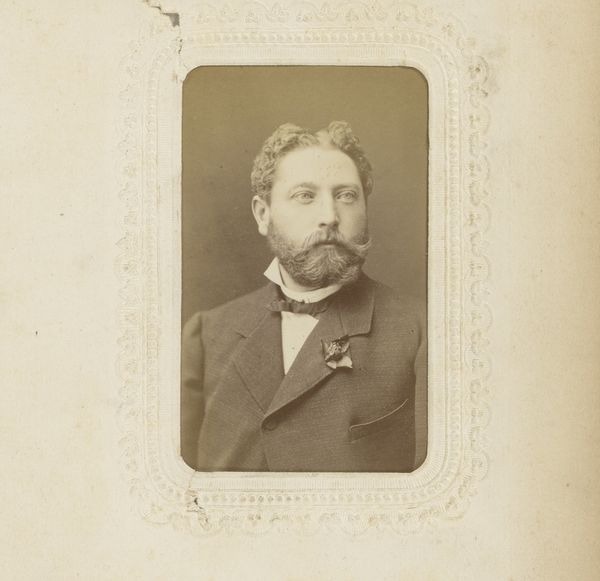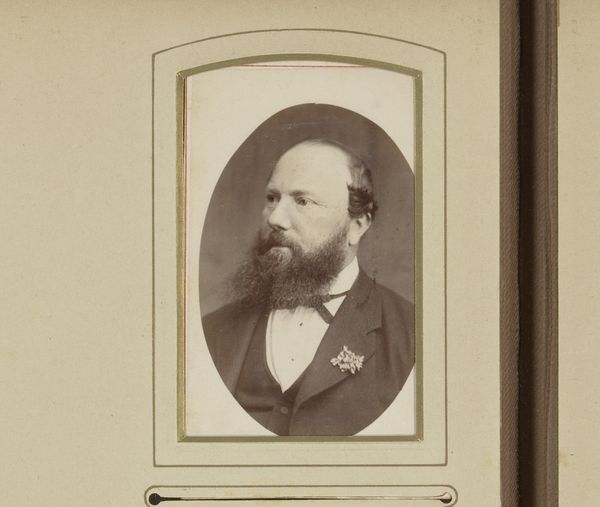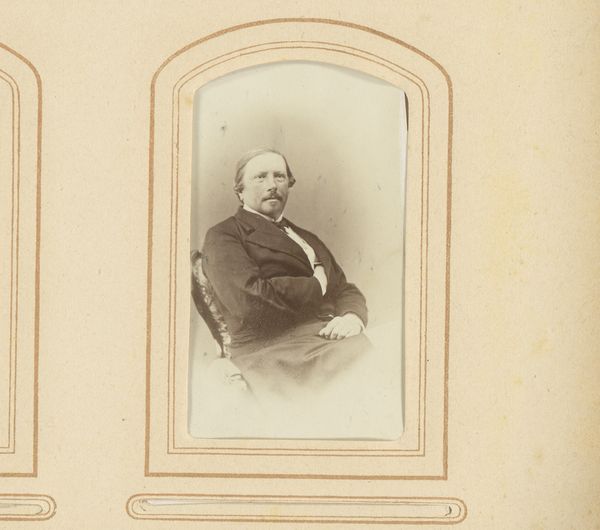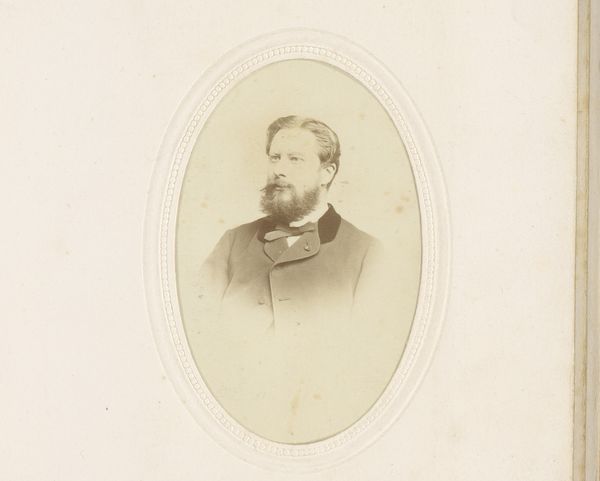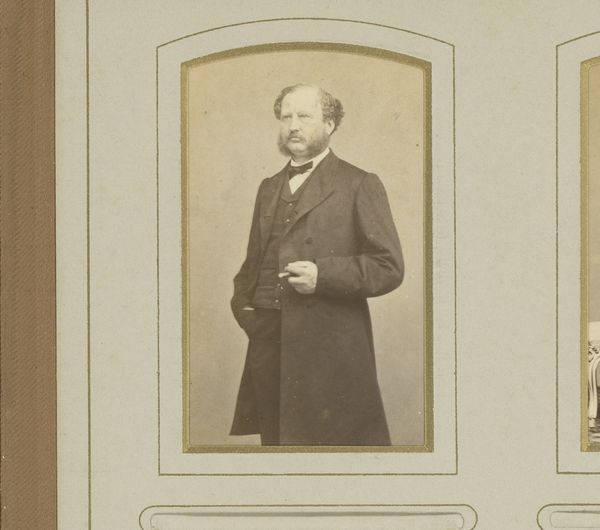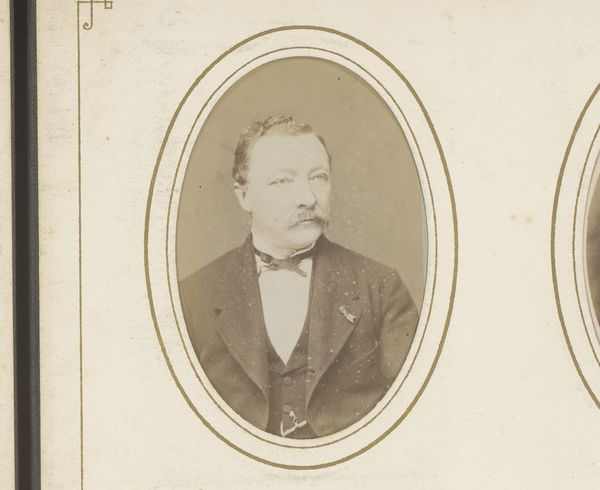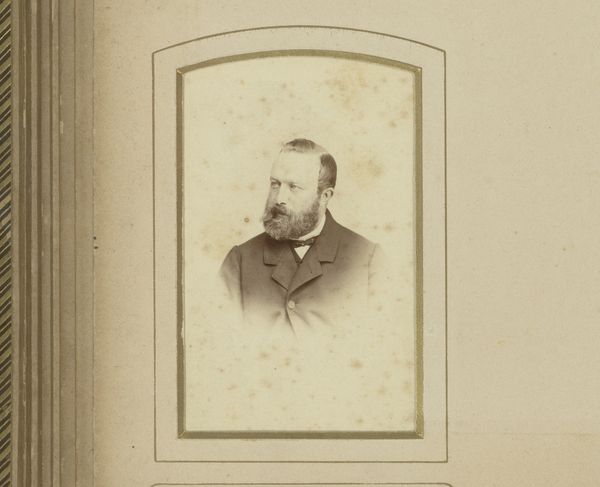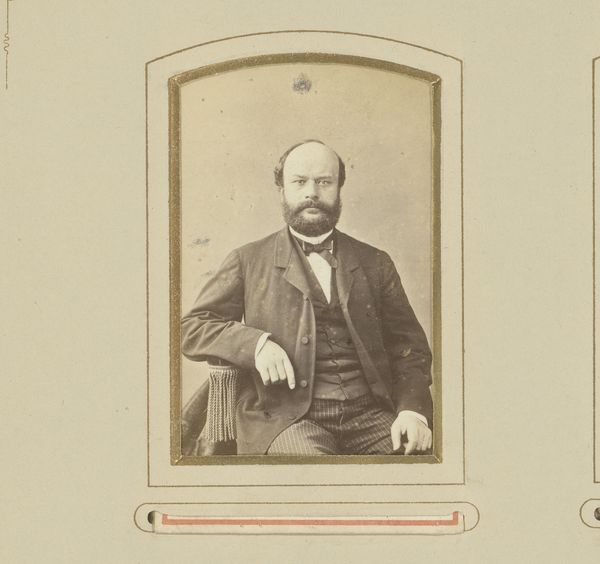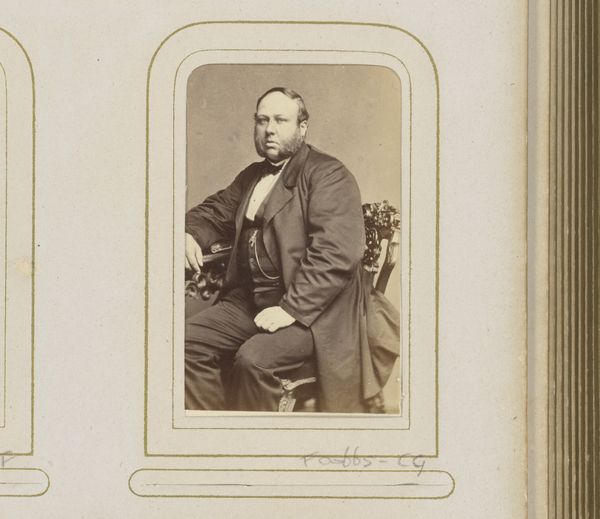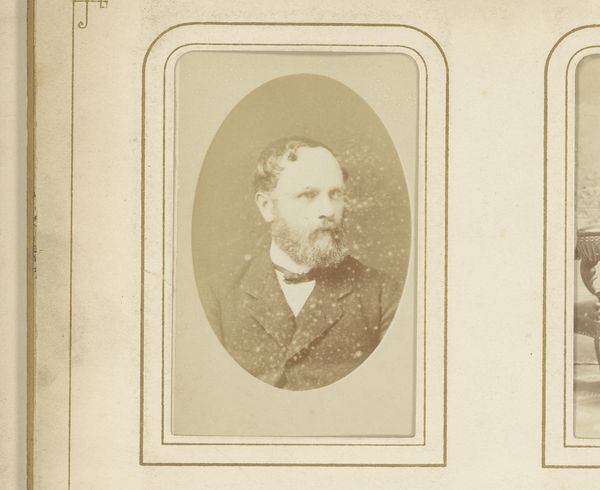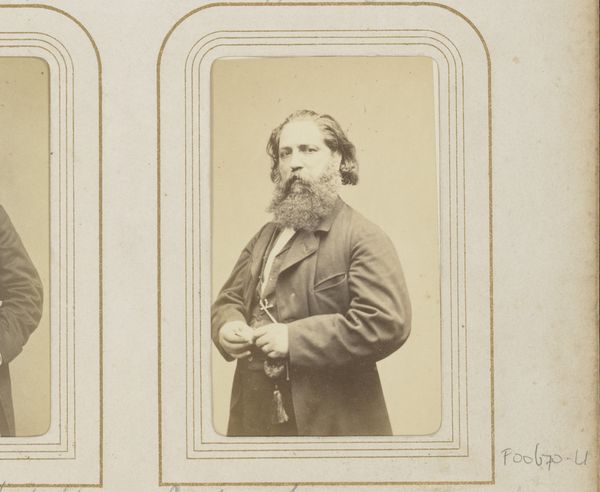
daguerreotype, photography
#
portrait
#
daguerreotype
#
photography
#
realism
Dimensions: height 106 mm, width 64 mm
Copyright: Rijks Museum: Open Domain
Editor: This is Emile Schweitzer's "Portret van een man," created sometime between 1870 and 1900 using daguerreotype photography. It has a quiet dignity. How do you interpret this work? Curator: The formality and stillness typical of the daguerreotype process speaks volumes about the sitter's position within a certain societal hierarchy, wouldn't you say? Think of the cultural context: access to portraiture, especially in these early photographic processes, would have been inherently tied to economic privilege. What does it mean to you that we are looking at this portrait now? Editor: I hadn't considered the access issue. It does add another layer, thinking about who gets to be seen, especially back then. The gaze is direct, and it feels like he is looking at the viewer with the authority that perhaps someone of privilege has. Curator: Precisely! And let’s think critically about that ‘authority.’ This wasn’t merely an individual expression; it's situated within a system. It implicitly reinforces social norms of the time regarding masculinity and class. The act of commissioning such a portrait solidifies that position, almost declaring his presence and status for posterity. Do you think portraiture of marginalized people from that time offers a different perspective? Editor: Definitely! If we had a portrait of someone who didn't conform to those societal norms, we could explore how they navigate representation and challenge those expectations. The choices of how to be photographed, their clothes, even their gaze. It makes me think about who gets to write history – or in this case, be visually documented within it. Curator: Exactly! Seeing this portrait is not only viewing an individual; it's a prompt to investigate the power structures embedded within the photographic representation of identity. Editor: I'm leaving with so many questions, especially regarding power and representation! Thank you for broadening my perspective on this portrait.
Comments
No comments
Be the first to comment and join the conversation on the ultimate creative platform.
